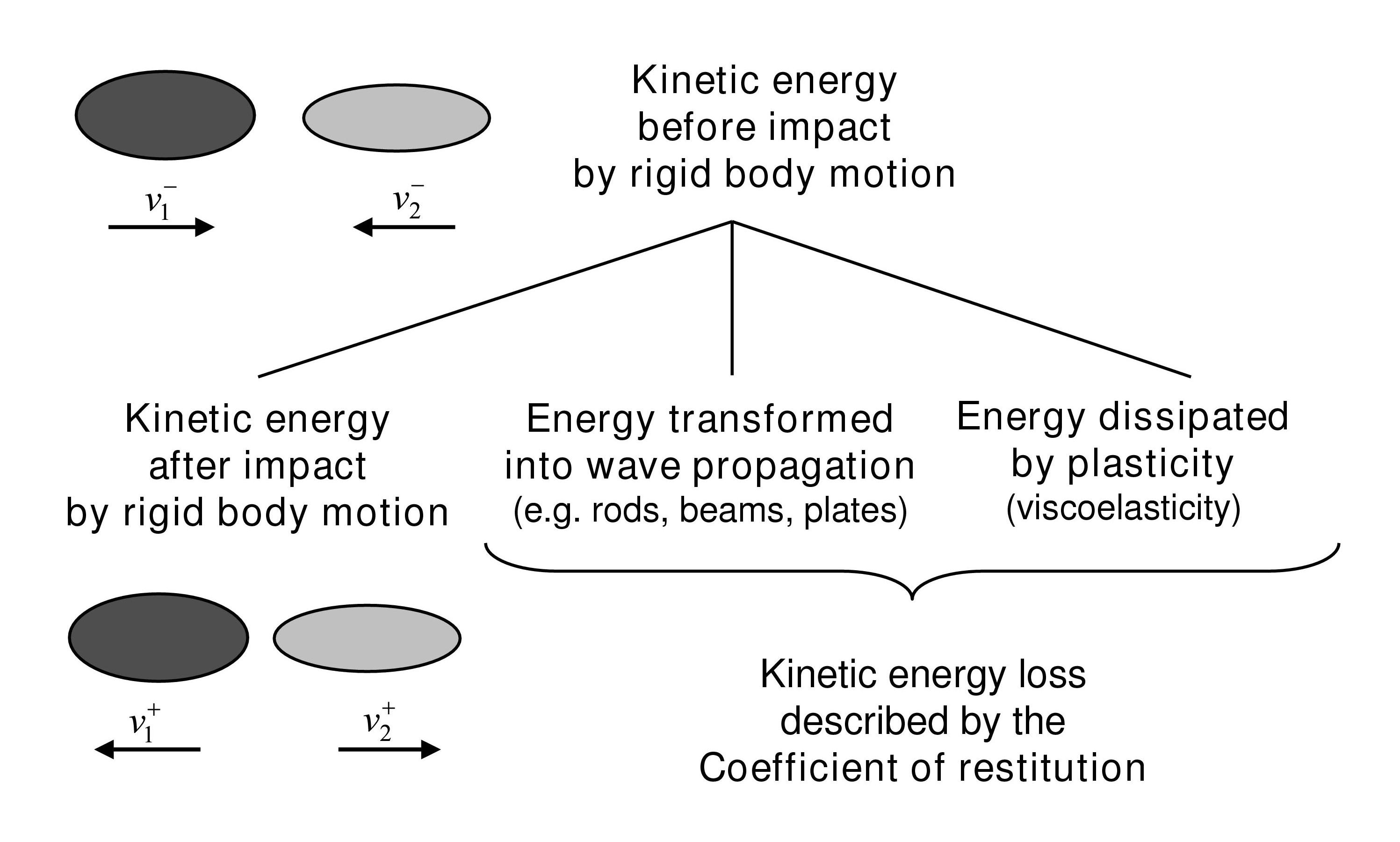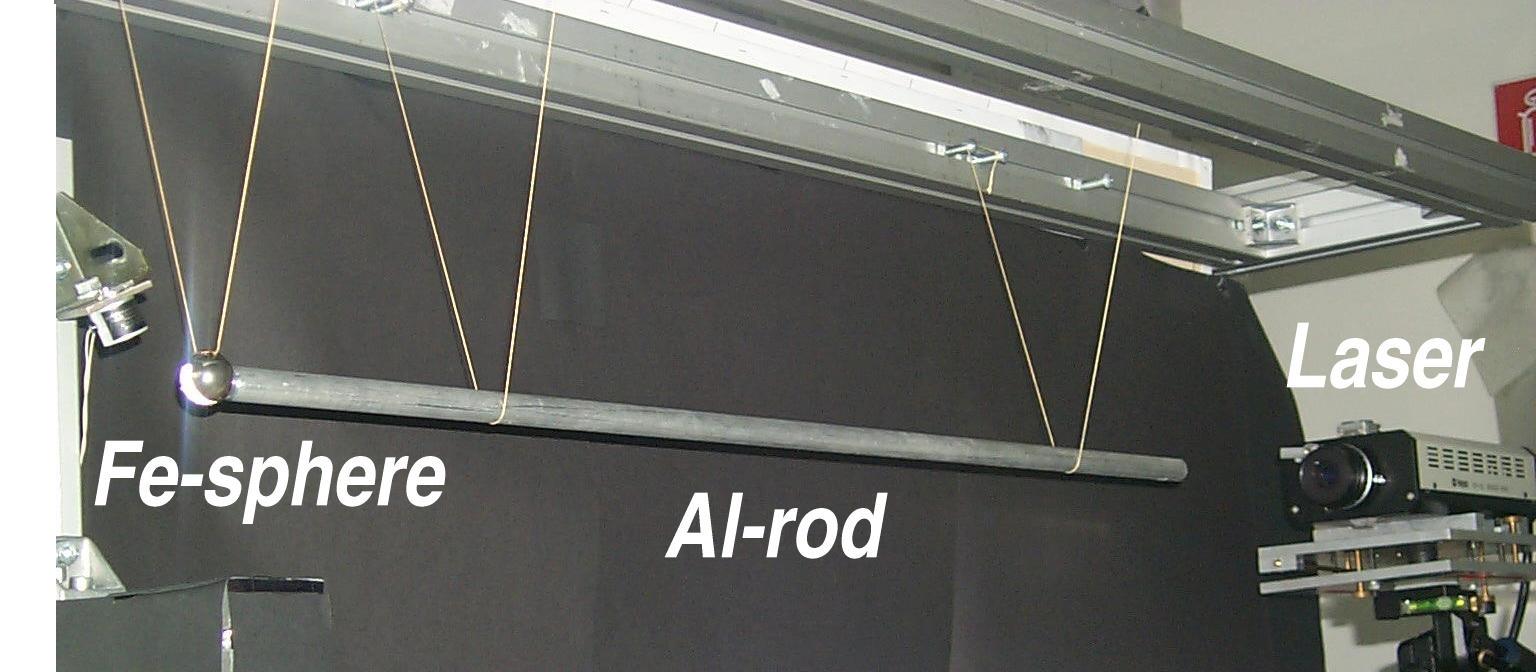
|
|
||||||||||||||||||||||||||||||||||
|
|||||||||||||||||||||||||||||||||||
Project Description
The accuracy of the used models is proved by experiments on both time scales. Therefore 1D- and 3D-Laser-Doppler-Vibrometers are used for velocity and displacement measurements. Special strain gauges with high frequency capabilities are used for strain measurements. Related Pages
Contact |
| Last modified
2.9.2014 ( |
 Impacts occur in many technical systems and present a theoretical complex topic with a high practical relevance. In machine dynamics the multibody system approach is often most efficient for the investigation of the overall motion.
The motion of the multibody system occurs on a slow time scale which is characterized by low frequencies.
The continuous motion might be interrupted by a collision resulting in an impact. During impact the multibody system loses parts of its initial kinetic energy.
This energy loss is on the one hand due to plastic or viscoelastic deformation at the contact region and on the other hand due to the initiation of waves in the colliding bodies.
The wave phenomena are characterized by high frequencies and are very important for impacts of slender bodies (e.g. rods, beams, plates, shells).
While energy is immediately dissipated during impact by plastic deformation, energy transformed into wave propagation is dissipated after impact by material damping.
Micromechanically these different effects of kinetic energy loss are combined and measured by the coefficient of restitution.
The coefficient of restitution is used in the multibody system simulation for the computation of the post impact velocities.
However the coefficient of restitution cannot be determined within the multibody system approach but must be measured or estimated from experience.
Using a multiscale simulation approach the multibody system simulation is interrupted if impact is detected.
Then the coefficient of restitution is determined from additional detailed simulations on a fast time scale.
Finally the coefficient of restitution is feed back to the multibody system simulation and the simulation of the overall motion continuous on the slow time scale.
Impacts occur in many technical systems and present a theoretical complex topic with a high practical relevance. In machine dynamics the multibody system approach is often most efficient for the investigation of the overall motion.
The motion of the multibody system occurs on a slow time scale which is characterized by low frequencies.
The continuous motion might be interrupted by a collision resulting in an impact. During impact the multibody system loses parts of its initial kinetic energy.
This energy loss is on the one hand due to plastic or viscoelastic deformation at the contact region and on the other hand due to the initiation of waves in the colliding bodies.
The wave phenomena are characterized by high frequencies and are very important for impacts of slender bodies (e.g. rods, beams, plates, shells).
While energy is immediately dissipated during impact by plastic deformation, energy transformed into wave propagation is dissipated after impact by material damping.
Micromechanically these different effects of kinetic energy loss are combined and measured by the coefficient of restitution.
The coefficient of restitution is used in the multibody system simulation for the computation of the post impact velocities.
However the coefficient of restitution cannot be determined within the multibody system approach but must be measured or estimated from experience.
Using a multiscale simulation approach the multibody system simulation is interrupted if impact is detected.
Then the coefficient of restitution is determined from additional detailed simulations on a fast time scale.
Finally the coefficient of restitution is feed back to the multibody system simulation and the simulation of the overall motion continuous on the slow time scale.
 A detailed investigation of the micromechanical mechanisms during impact is performed on a fast time scale including elastodynamic and plastification phenomena.
The fast time scale is characterized by the high frequencies produced by impacts and the fast time scale simulation is limited to the impact duration which is mostly significantly shorter than 1ms.
Analytical investigations are limited to geometrically simple cases.
For the investigation of impacts of arbitrary shaped bodies and non-linear material behavior numerical methods such as the Finite Element Method (FE) have to be used.
However these simulations are computationally expensive.
A significant efficiency improvement is achieved, by limiting the FE-model to the local contact region while the simulation of the elastodynamic effects are performed using a modal reduced model of the impacting bodies.
A detailed investigation of the micromechanical mechanisms during impact is performed on a fast time scale including elastodynamic and plastification phenomena.
The fast time scale is characterized by the high frequencies produced by impacts and the fast time scale simulation is limited to the impact duration which is mostly significantly shorter than 1ms.
Analytical investigations are limited to geometrically simple cases.
For the investigation of impacts of arbitrary shaped bodies and non-linear material behavior numerical methods such as the Finite Element Method (FE) have to be used.
However these simulations are computationally expensive.
A significant efficiency improvement is achieved, by limiting the FE-model to the local contact region while the simulation of the elastodynamic effects are performed using a modal reduced model of the impacting bodies.